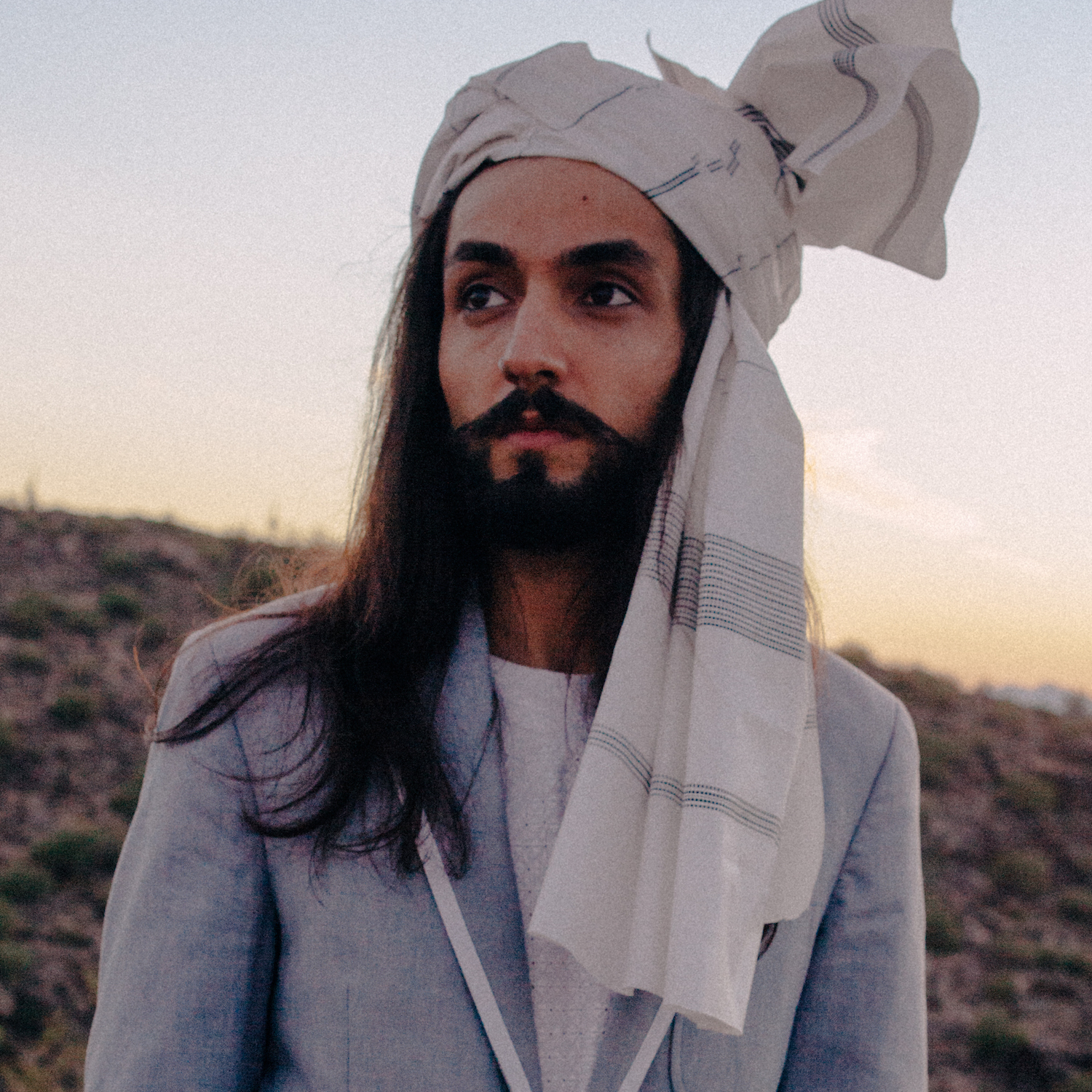Catching up with our favourite hip young robab-slinger, Qais Essar
Qais Essar doesn’t play in a rock and roll band, nor does he want to; he’s too cool for that. He’d rather stick to his guns and play the twangy lute he was born to strum: the robab, which, like he himself, hails from beautiful Afghanistan. Qais has long been plucking the strings of his robab, and has just released a new album, Tavern of Ruin, as well as a charming and otherworldly promotional video for one of its songs, which is enjoying its debut, well … here on REORIENT. Yessir! So, just who is Qais Essar, and what does a robab sound like, anyway? Read on, and turn up the volume … loud (as always).
Qais! How did you first develop an interest in the robab? Why not, well … join a rock and roll band?
It’s funny – I left the rock and roll bands for the robab; it just rocked so much harder. But before I get too far ahead of myself, let’s go back to the beginning. I was very young when I started my musical education, and there was a trial period for instruments in those early days, so I played many different ones. When I was given the robab, I met my heart’s desire and found … a purpose. As I progressed with the robab, my interested in everything else waned, simply because nothing else could rival its sound or how it made me feel. Rock bands had become passé, and by that point, it was all about the robab – as it would be, for a very long time.
What’s great is that at this point in my career, having studied and still being a student of both Eastern and Western music, I have a foot in both worlds. I can perform classical music, and the next night play an experimental contemporary set with my band, Raag n’ Roll.
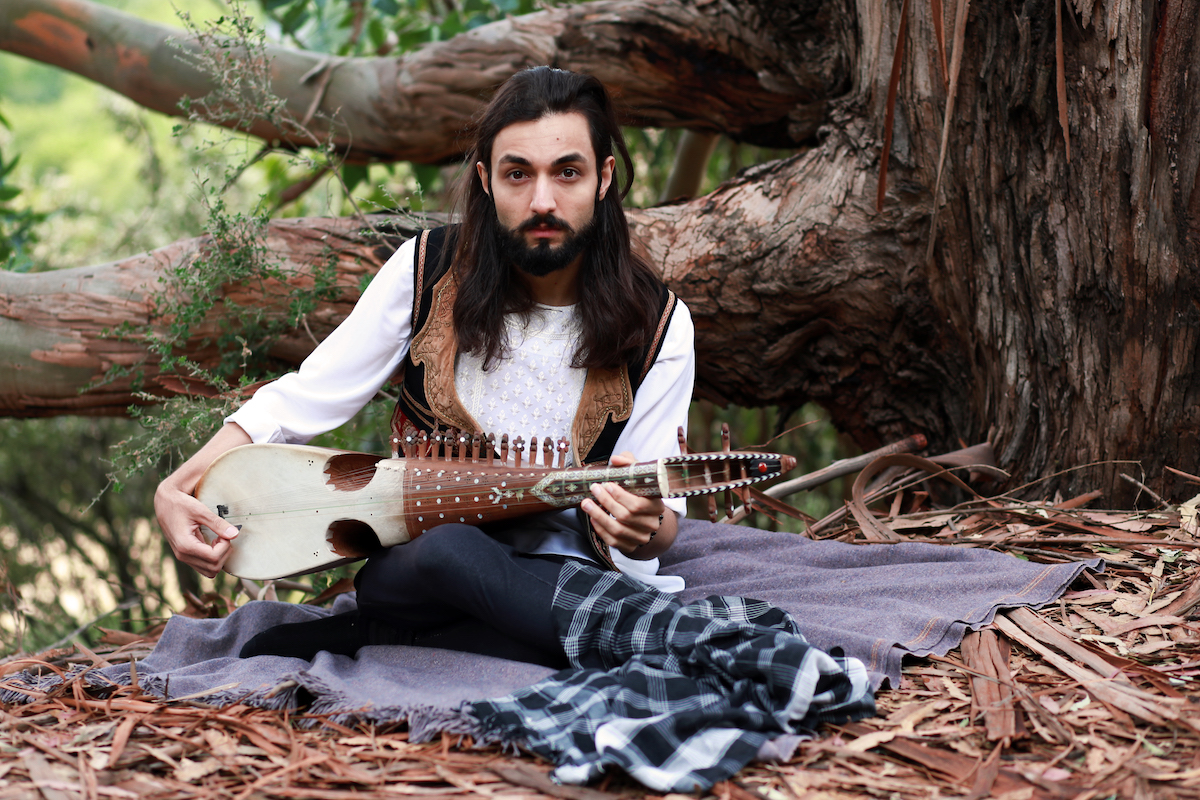
Courtesy Sulyman Qardash
Now why didn’t I think of such a name? Anyway … Qais, you’ve played with loads of musicians, including many Indian ones. When I tell people that classical Iranian – and I mean that in the broader, ethno-cultural sense of the word, not simply in reference to the country Iran – and Indian music are incredibly similar, some people (who of course aren’t too into these genres) look at me as if I’m nuts. I mean, we both share the same origins, so I don’t see what there is to be astonished at.
Classical Afghan music is a sub-branch of classical Indian music, and yet we sing our ghazals in Dari Persian. It’s very hard to dispute the commonalities that we all share – not only in performances, but also in the way that we learn the music. We have an oral tradition: you learn from an ostad, or master. There are specific things in both Iranic and Indian music that give them their particular identities, but at the end of the day, it’s all music. Stepping back and looking at something broader than an Indo-Iranian context, one will see that these similarities are also found in the music of other cultures. Raag kirwani (Kirwani raga) in classical Indian music is the dastgah-e Esfahan (mode of Esfahan) in classical Iranian music and the harmonic minor scale in the West. Many rivers, one sea.
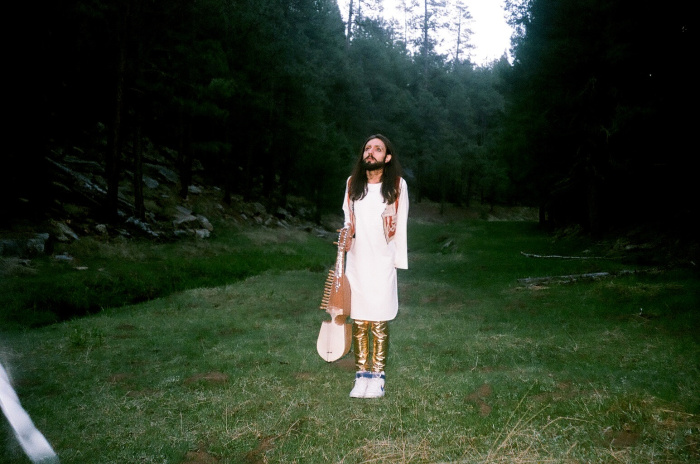
Courtesy Negine Jasmine
You’ve got me thinking of Jimmy Cliff now. Speaking of ostads and musicians – you’ve recently played with ABBA and Phillip Glass. That’s quite something! How did it come about?
I was put in contact with International Alert, a peace-building organisation that works with 175,000 individuals in over 25 countries around the world. They were curating a special project called ‘Peace Tracks’, a collaborative effort from musicians and producers building on contributions from artists such as Phillip Glass, A.R. Rahman, ABBA, etc. They reached out to me and asked if I too would join the amazing group of musicians involved: an offer that I could not pass on. I never thought I would share track credits with Phillip Glass one day … that really is something.
The dog barks, but the caravan continues on … People can say what they want, but they won’t stop this caravan.
Yeah. Now, to get back to your music – though it’s instrumental, it contains a plethora of references to classical Persian poetry and mythology – e.g. the songs about the meykhaneh (tavern) and the ‘two-horned div (devil)’, etc. How has Persian literature inspired your music?
Afghanistan is situated in a special place where there is a sharing and overlapping of cultures. Sharing a language allows us all to enjoy Persian poetry and mythology. Sufi lore and literature are also everlasting wells of inspirations that I draw from heavily. To be specific, the meeting and union of Mowlana (‘Our Master’) Jalaleddin Mohammad Balkhi (known also as ‘Rumi’) and Shams-e Tabrizi and the concepts they explored and discovered together are themes I often revisit in my works and compositions. This album specifically … the symbolism of the tavern, this place of destruction to achieve mystical union, originates from Sufi poetry and arcane knowledge. The robab itself has also been mentioned in many works of Sufi and Persian poetry. You know, Mowlana is said to have played the robab, too.
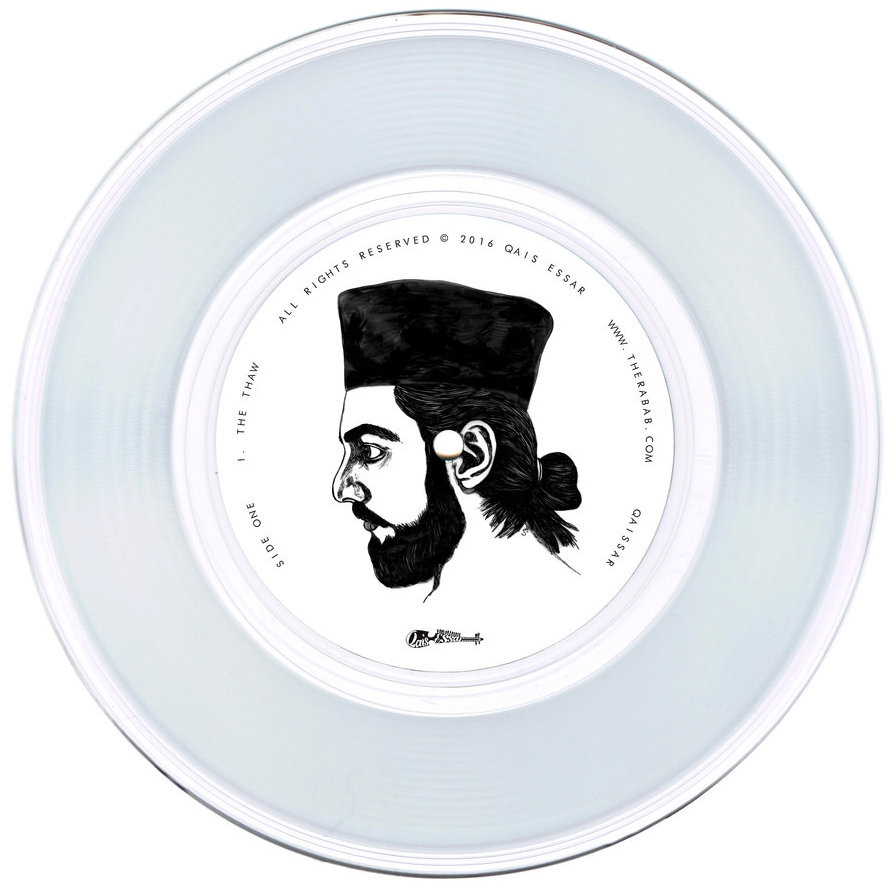
The vinyl edition of Tavern of Ruin (artwork by Moshtari Hilal)
Yes, I remember a particular poem of his having to do with many ways of showing devotion; playing the robab was one of them. But how’s robab music in Afghanistan doing today? How would you describe the state of classical Afghan music amongst youth in Afghanistan and the diaspora? I know there are some smashing Afghan rock and roll bands and there was that whole ‘Afghan Star’ business, but we don’t hear too much about young classical musicians like you often.
Classical music is treated as a thing of antiquity in many different societies, unfortunately, [including] ours. If there aren’t many younger classical musicians getting out there, it’s because there is a system in place that does not promote or encourage more esoteric art forms. By weaving classical music in modern compositions, my hopes are to widen the demographic and have more people – who may not have been attracted at first – discover and enjoy the beauty of this music. By giving the music a vehicle to come into the 21st century, it will ensure this niche market grows, giving rise to younger musicians dedicating their lives to this art. In theory, anyway.
OK – let’s talk about the new album now. What’s the story behind this one?
Tavern of Ruin is an experimental dialogue between Eastern and Western music, with the robab acting as a liaison between cultures. Like never before, the robab takes a dominant role in a sonic tapestry and borrows from different traditions to create a new genre for a global audience. Following a conceptual narrative of rebirth and spiritual revolution, Tavern of Ruin is faithful to its own origins steeped in mysticism, though wholly a contemporary album with textures and ideas relating to the modern world. As an artist, I feel this is my most complete statement [thus far].
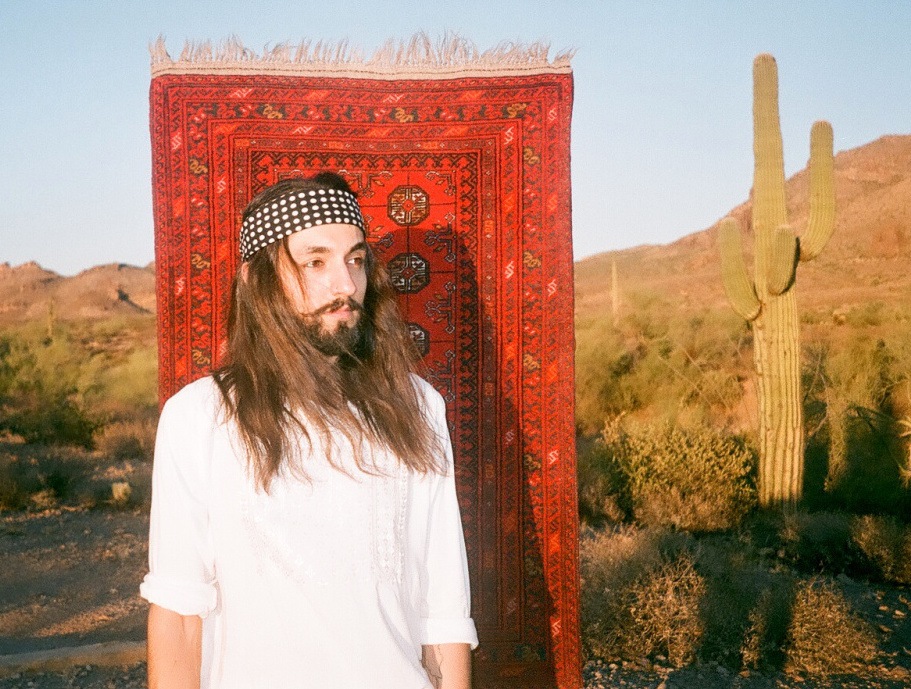
Livin’ the #RUGLIFE (courtesy Negine Jasmine)
I’m really digging the video for Poppy Flowers Bloom in the Springtime of My Love. Who designed the costumes and the set? The masks have this awesome vibe to them … they’re like a cross between a Rajasthani puppet and the Nutcracker.
Rad, thank you. Poppy is my second collaboration with the Mexican filmmaker Cesar Orozco. We started in Phoenix and shot in random places of interest along the way to Salvation Mountain, near Salton Sea in southern California. This gift of love and homage to God in the desert embodies the whimsical theme of the pysch-jazz/bossa nova-inspired piece so well. The spaceman has been a concept I have been toying with since the inception of my band The Qosmonauts. I had a very specific [image] in my mind regarding costumes and the heads, so I spent a week doing arts and crafts and made the heads myself. Kevin Moore, a Phoenix-based artist, did a wonderful job of bringing my heads to life by giving them their fancy faces. The video tells the story of Qosmo and Qosima, estranged lovers in search of each other, who find one another on the mountain – which is in itself a declaration of love.
Far out.
I’m still vacuuming glitter out of my rugs.
Yeah, but otherwise … poppies, taverns … it sounds like you’re having a blast over there.
Yes, I throw the best parties!
I’ll make a note of that. Now, will there be a tour to back the album? Where will you be playing?
Qais and the Qosmonauts will be touring the American southwest at the end of November and the beginning of December. We have a handful of dates, and will be performing music from the [new] album and music that comes to us there and then in the moment. All of our tour dates and other performances can be found on my website. We would love to see all of your beautiful faces.
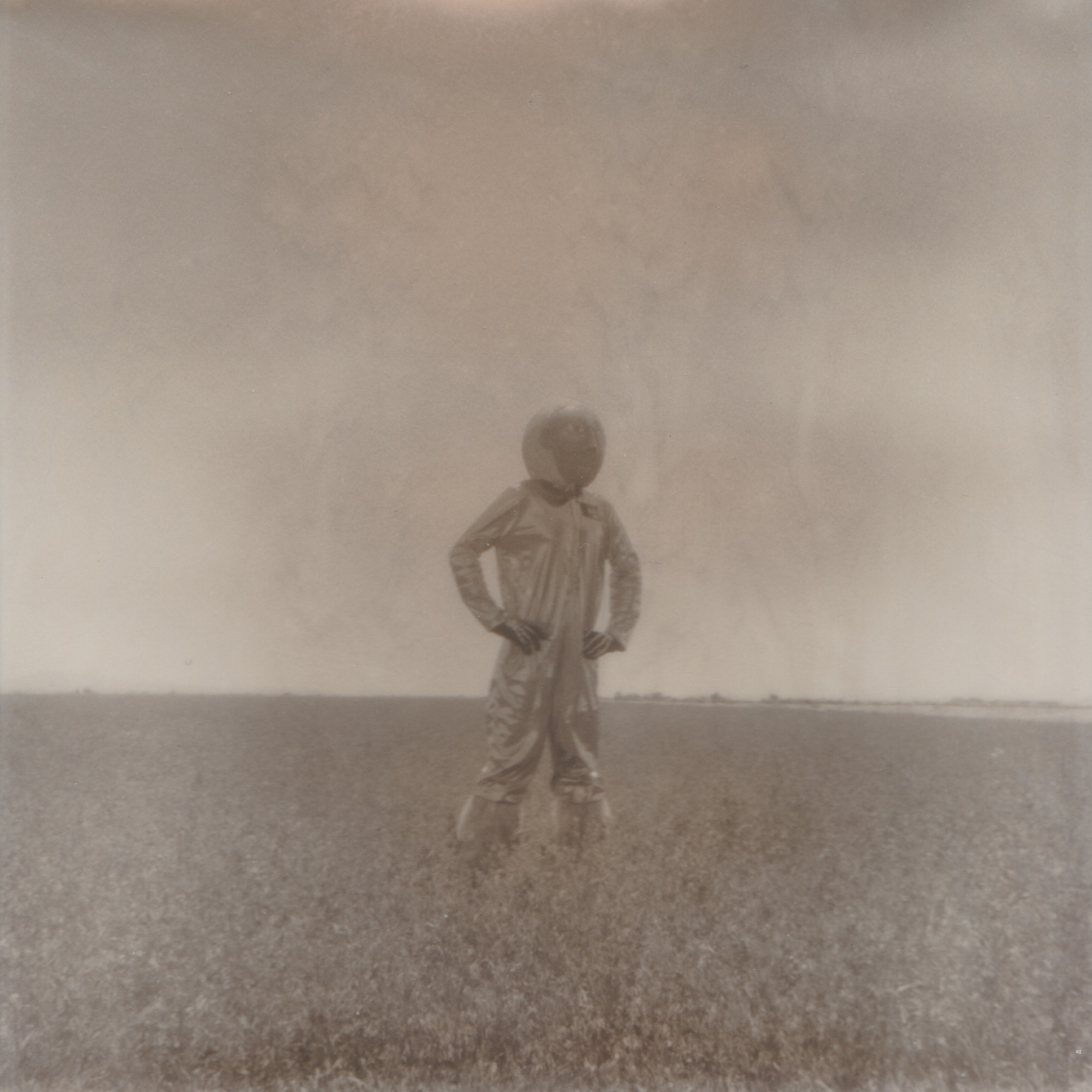
Courtesy Cesar Orozco
I can’t let you go without learning a bit of Pashto. Teach me something.
Spey ghapaegi, karwaan teregi (سپې غپيږی، کاروان تيريږی). The dog barks, but the caravan continues on … And, true to my own life, people can say what they want, but they won’t stop this caravan.
Or, as Freddie Mercury once put it, ‘I’ll always walk around like a Persian popinjay – and no one’s gonna stop me, honey!’ I live by that. Thank you, Qais jan.
Cover image courtesy Cesar Orozco
